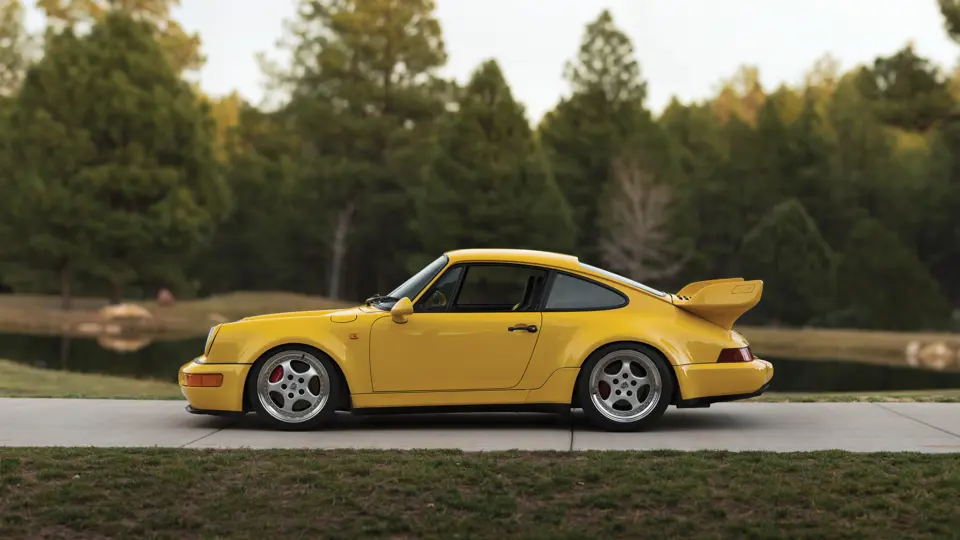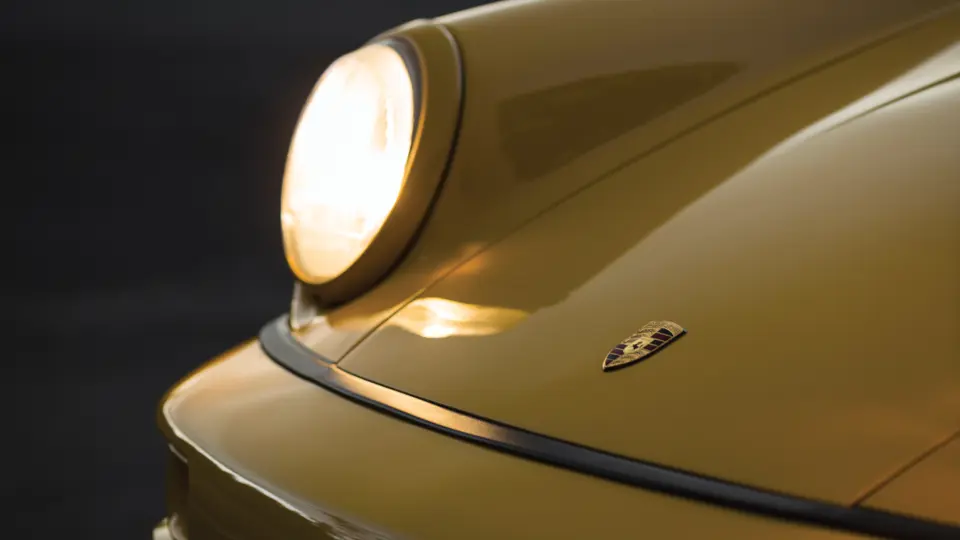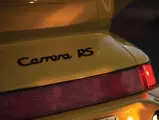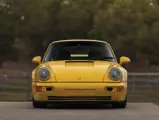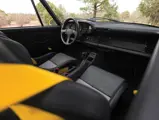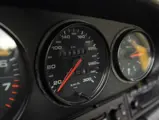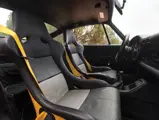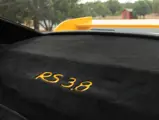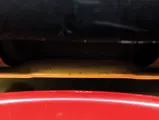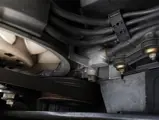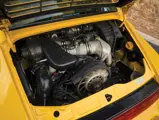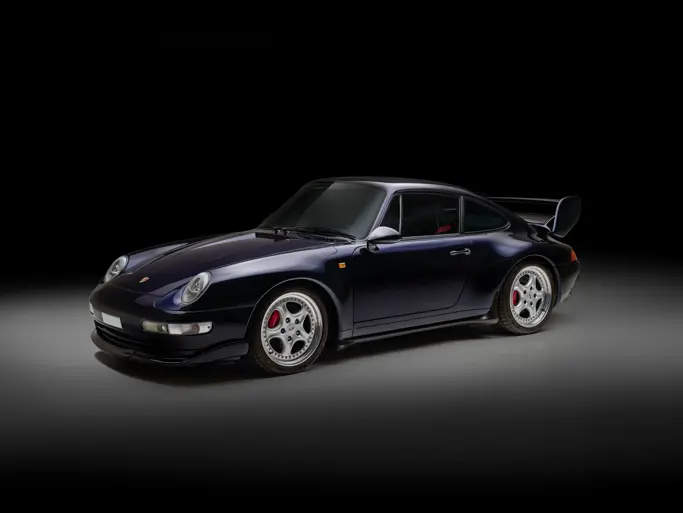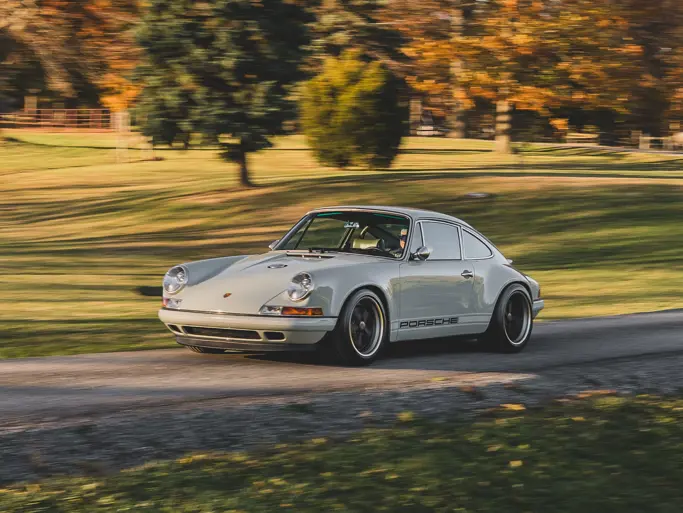In January of 1989, Porsche introduced its latest 911 redesign, internally known as the Type 964. The automaker claimed the car was over 85 percent new. Visually, the 964 was a bit stouter with smoothly shaped thermoplastic bumper covers at nose and tail. The 964's unibody had been completely re-engineered to accept a new all-wheel-drive system developed in the 959 and 961. It was dubbed the Carrera 4. The less-complex rear-wheel-drive Carrera 2 arrived a few months later and would form the base of the 964's higher-performance and racing derivatives. The first of those was the RS 3.6 of 1992, which was powered by a warmed-up version of the standard twin-plug, normally aspirated 3.6-liter engine. Porsche then upped the ante with its Carrera RS 3.8 for the 1993-1994 model years.
Jürgen Barth, head of Porsche's Customer Sport Department and co-author of an authoritative 2016 volume on the model, wrote that the company's positive experience with the single-model 944 Cup racing series prompted the creation of a new racing car based on the 964, and would comply with the FIA's Group N regulations for larger, series-production touring cars and GTs. The cars served as the homologation base for the 3.8 RSR for international competition. Many of its features were borrowed from the 964 Carrera Cup cars. There were two versions; the Sport (or Lightweight) weighed about 10 percent less than the Touring version. Virtually all of the examples sold in Germany were of the "basic" variety, but neither type was made available to North American buyers.
The first RS 3.8 was built in 1991 on a pre-production 964 under the direction of engineer Roland Kussmaul. Barth wrote, "This car was delivered from the factory with the option M491, the 'Turbo-look,' with the body parts of the Turbo. Porsche offered this option for the Carrera 4 for the 1993 model year." Although Porsche was under significant financial stress from the worldwide recession, the project moved forward and was soon validated by victories in the 1993 ADAC GT Cup and 1994 BPR series.
While the wide-bodied 1993-1994 RS 3.8 resembled its sibling 964 Turbo, it was easily identifiable by its larger fixed bi-plane rear wing embossed with the "3.8" logo on its sides. Like its spiritual predecessors, the brilliant and very much sought-after RS 2.7 and RS 3.0 of 1973 and 1974, the 964 RS 3.8 was offered in Touring and Lightweight form, and echoing the earlier model, lots of attention was paid to weight reduction. The front trunk lid and doors were stamped from aluminum rather than steel as on the production 964. The door glass and rear quarter windows were thinner and lighter as well, just as on many of the RS 2.7s. Following that theme, the 964's standard plush carpeting was replaced with thinner and lighter material, the rear seats were deleted, and items such as the power door locks, electric window lifts, and electric multi-adjustable seats were replaced with less weighty components. There was no sound insulation or undercoating. The door cards were of the lightweight design as on the RS 2.7 and 3.0, with simple strap pulls and no armrests. Air conditioning was dispensed with and the power steering was replaced with a lighter, non-assisted rack. If it did not add to performance, out it went.
The result was a machine that scaled some 600 lbs. less than the 3,300-lb. Carrera 2. That said, many owners opted to retain some of the interior niceties to enhance their highway driving comfort. Most RS 3.8s were still very civilized for a barely street-legal weapon. Transmission gearing was changed from the standard 964, with first, second, and third gears all numerically higher. The synchronizer sleeves were of more durable steel, the shift lever was shorter, and a limited-slip differential was standard. The result was a brilliant road car with fierce acceleration, capable of scorching the autobahn or other suitable highway or track at almost 170 mph.
Only 55 were constructed, just enough to satisfy the FIA minimum. Of these, wrote Barth, 52 were left-hand drive and three had right-hand steering. While immensely satisfying to drive, most of these cars vanished into private collections for the occasional use of their fortunate owners. A full dozen of this rare and exciting model left the factory in the eye-catching hue of Speed Yellow (L12G) created by designer Harm Lagaaj and Porsche Exclusive manager Rolf Sprenger, offset with black anodized exterior trim. As befits a near-competition model, there is a strong but light transverse front suspension brace in the front trunk area, bolted to special cast-alloy brackets, as well as a trunk-mounted ignition-kill switch. A simple metal rod replaced gas-filled struts to support the front trunk lid. RS 3.8s were fitted with standard 9- and 11-in. wide by 18-in. diameter "Speedline for Porsche" modular alloy wheels with 235/40 and 285/35 tires, and large ventilated and cross-drilled disc brakes, 12.7 in. in diameter in front and 11.8 in. in the rear, aided by ABS.
This left-hand-drive example appears to be the second-to-last RS 3.8 completed. It left the factory in late 1993, one of the 12 ordered in Speedgelb. This car was built to Japanese specification with metric instruments. The interior was black and grey, and the two deep racing seats had hard-shelled backs also finished in body color, with yellow fabric door latch pulls, and the "RS 3.8" logo embroidered in yellow on the rear shelf carpeting.
It was among several RS 3.8s delivered to German racer Helmut Reis' Eco-Tec Consulting in Aachen. Reis immediately exported 497111 to its first owner in Japan. Brought to the U.S. under a U.S. DOT "Show and Display" license issued 9 February 2015, it joined the collection of a prominent Porsche enthusiast. This highly desirable Porsche has been driven only 6,825 km - just 4,350 miles - from new. Recently serviced by a trained Porsche technician, including a fill with Porsche Classic motor oil, this fine automobile is supplied with its correct collapsible spare tire, jack, inflator, a perfect tool roll, and original manuals and documentation in German, English, and Japanese; a pair of unused tri-color Porsche work gloves; and original Japanese emissions data and safety labels.
This rare low-mileage, museum-quality Porsche Carrera RS 3.8 presents a unique opportunity for the serious enthusiast.


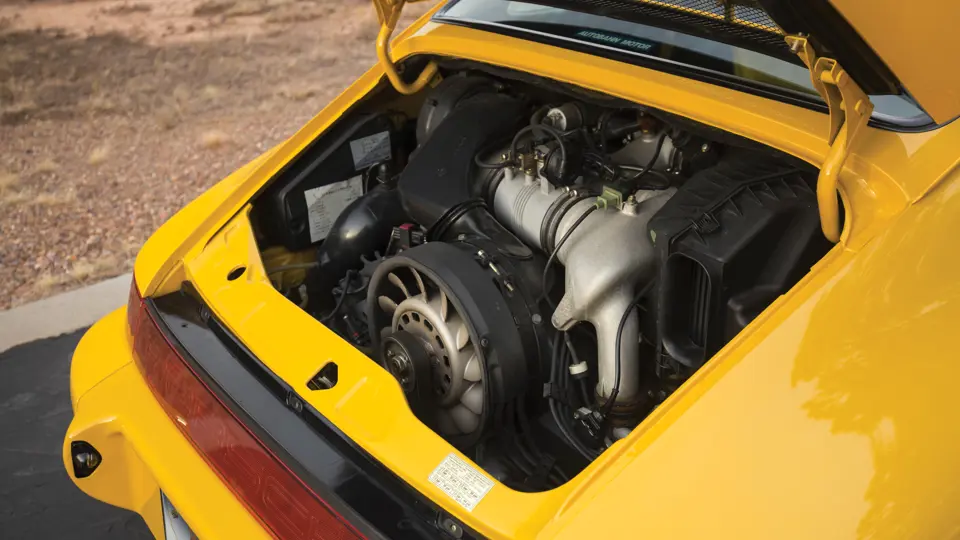

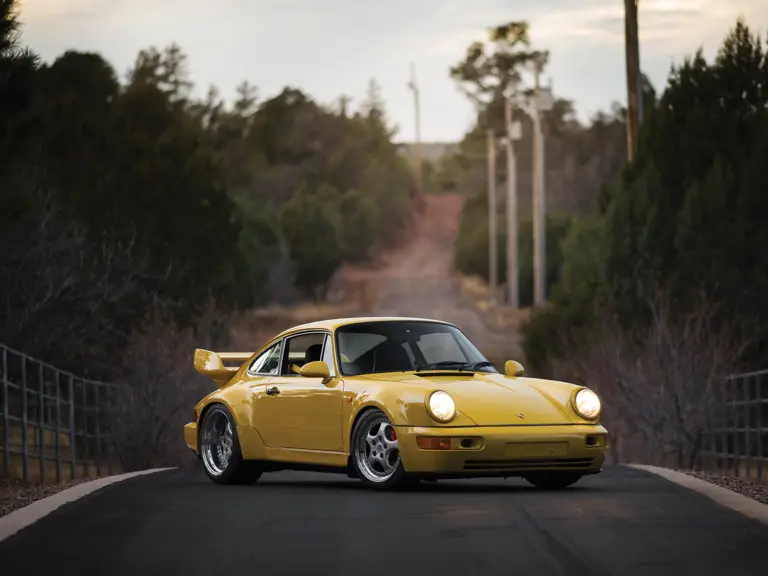
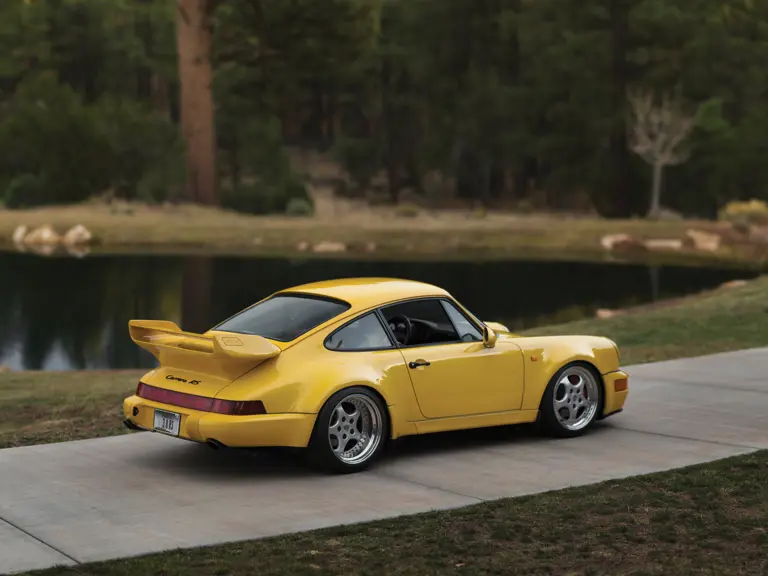
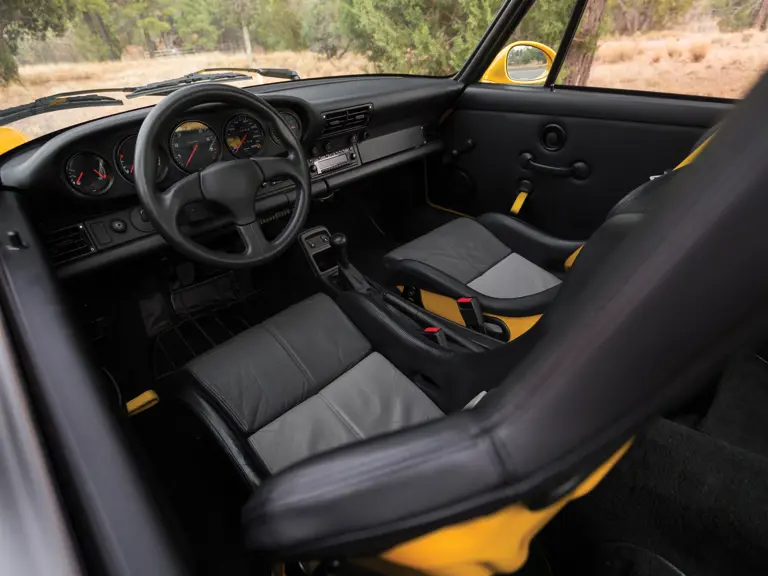
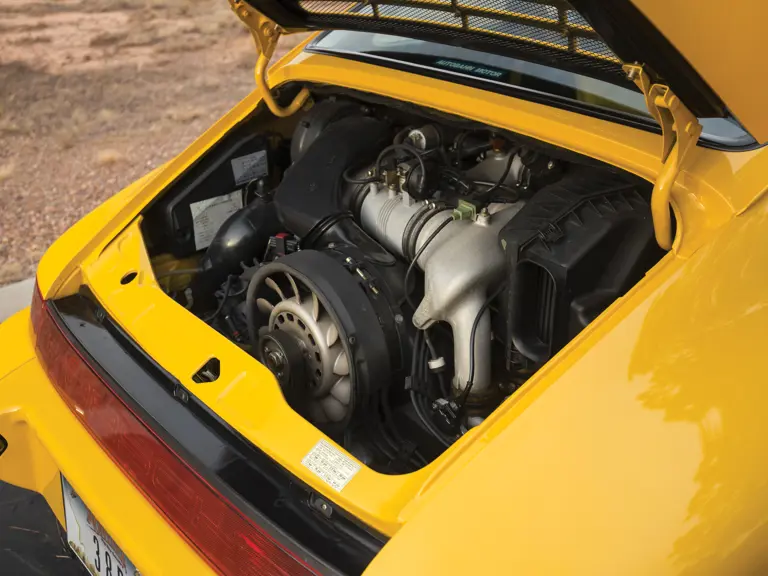
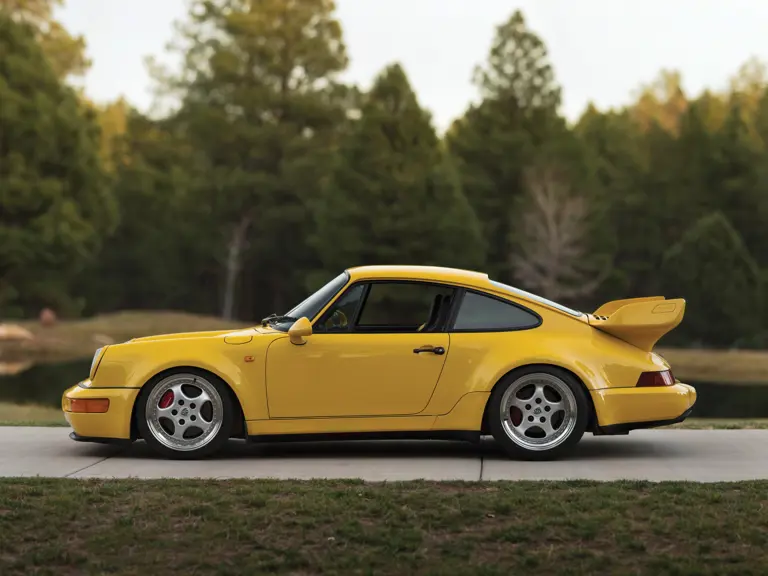
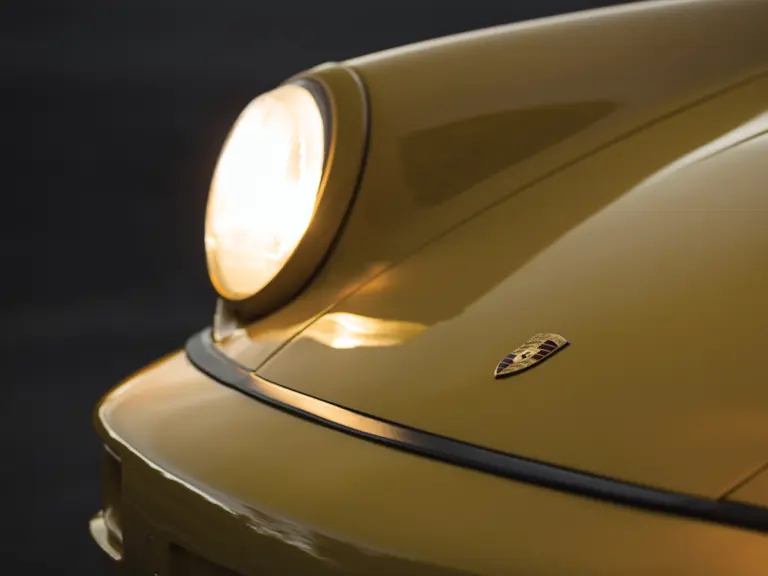

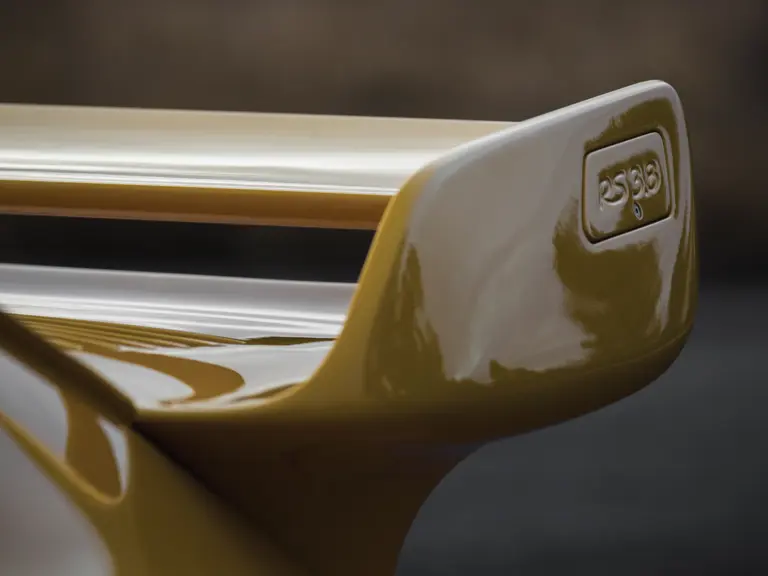
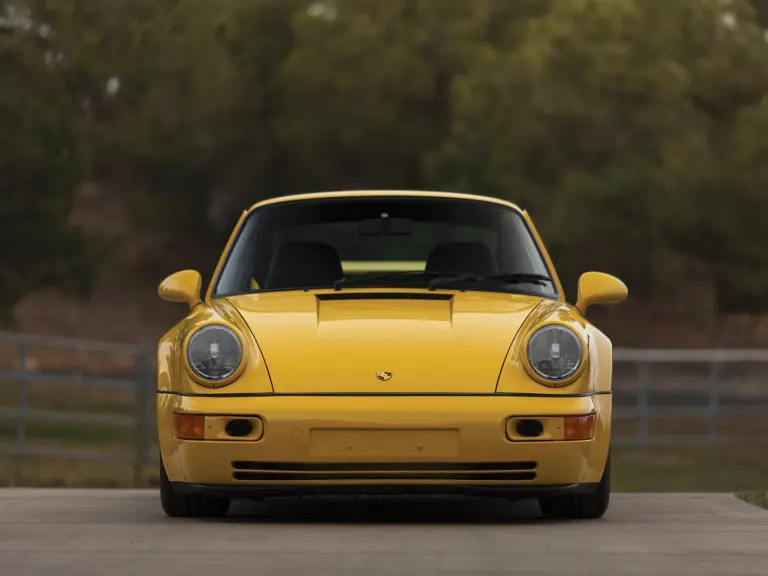

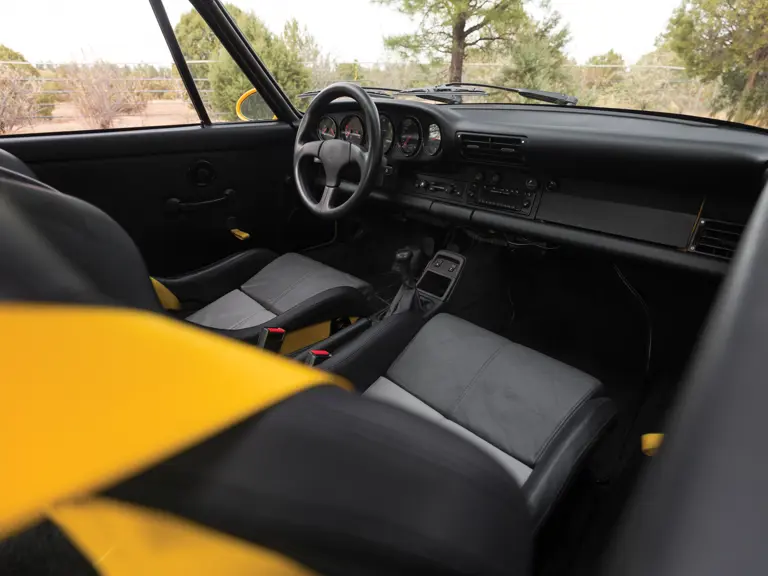

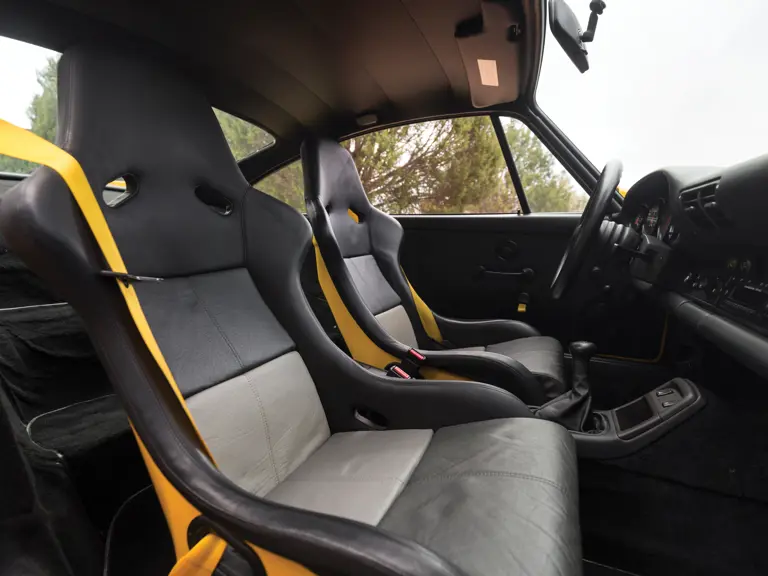
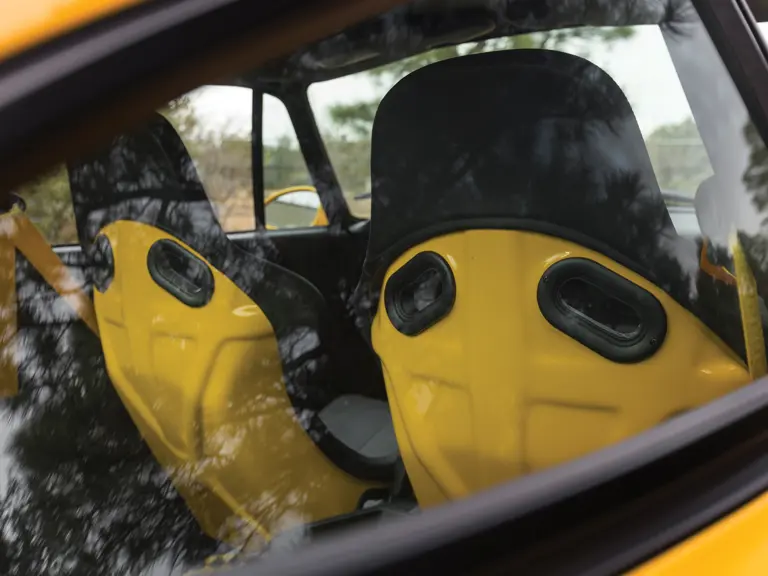
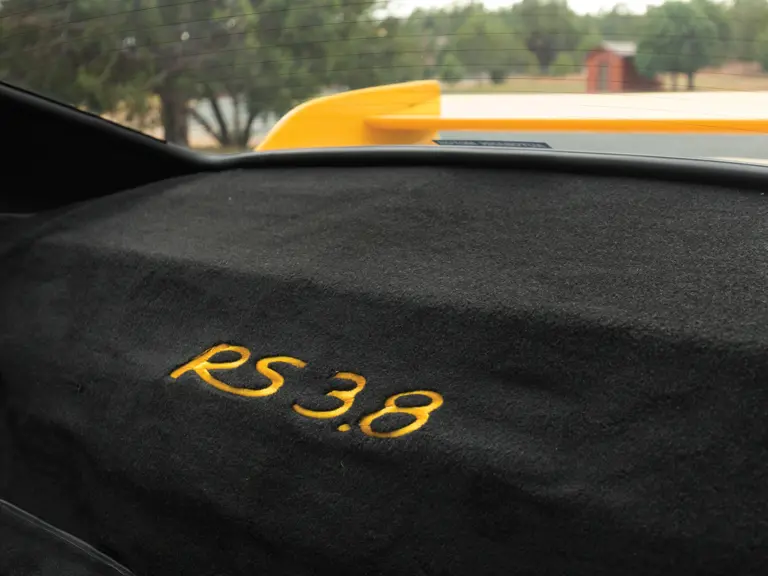

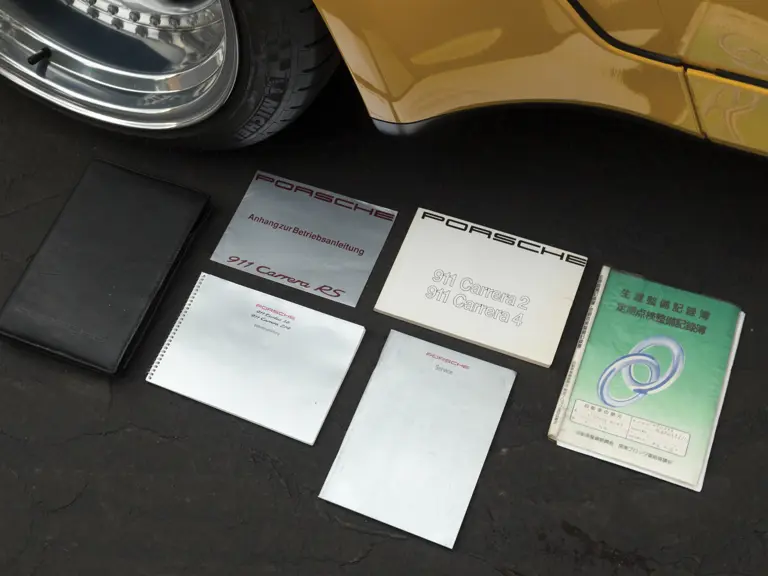
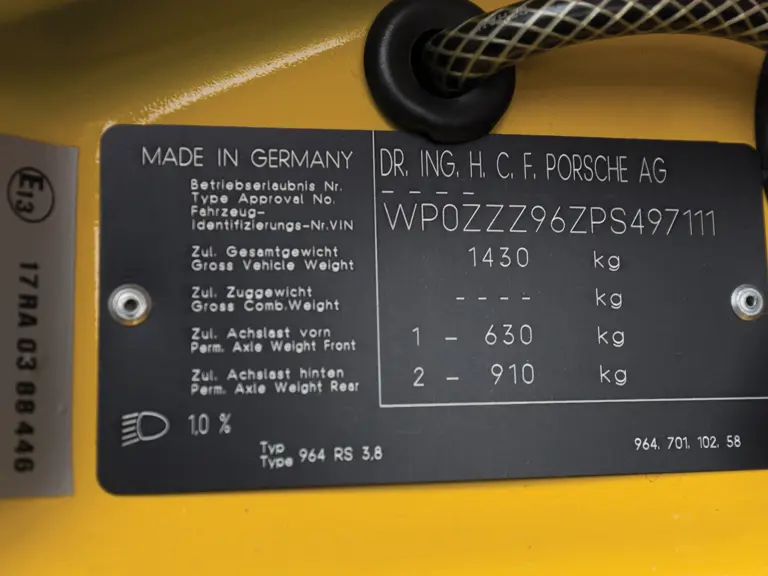

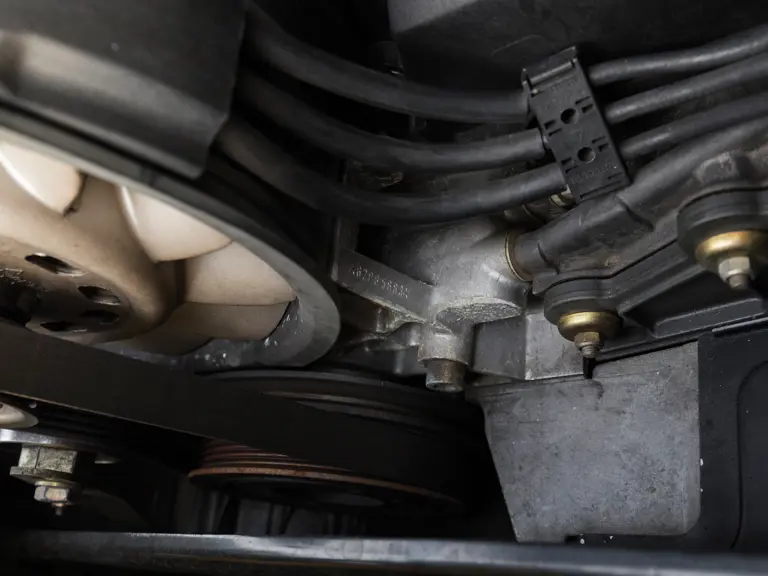
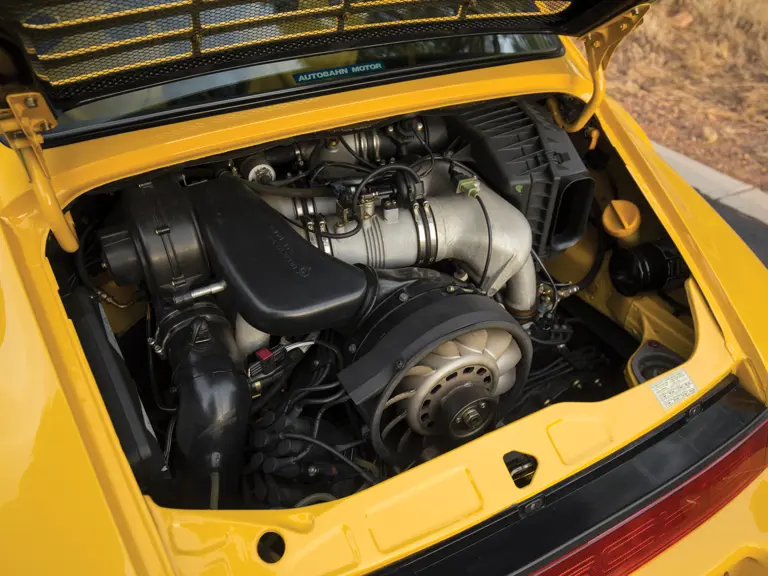




 | Amelia Island, Florida
| Amelia Island, Florida
